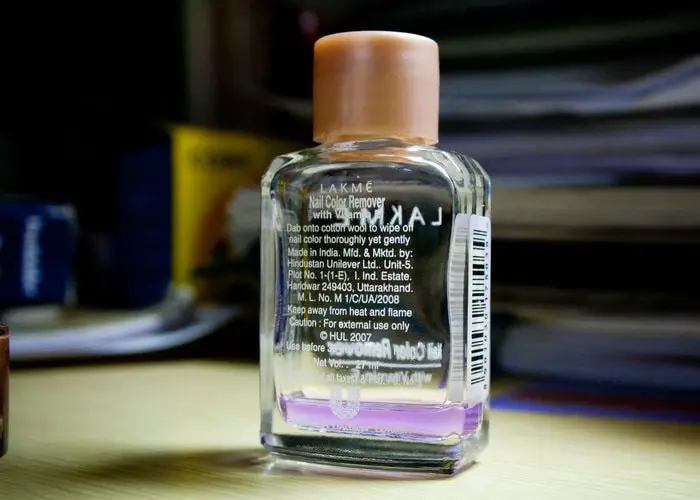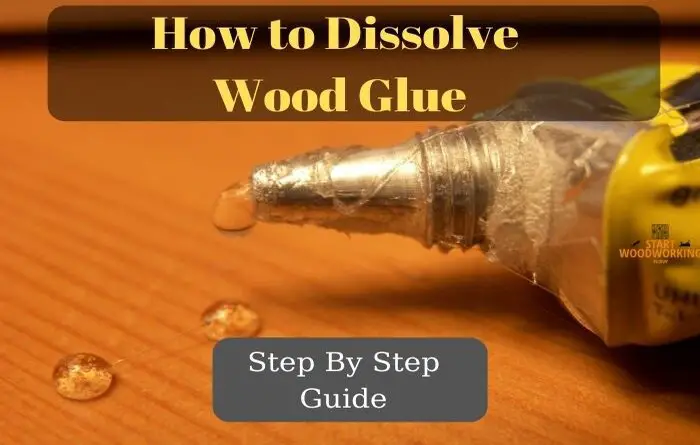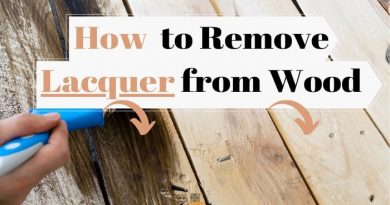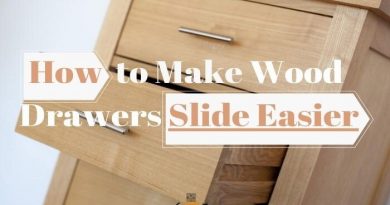How to Dissolve Wood Glue [Quickest & Easiest Way]
Dissolving wood glue is a rather difficult process, and if glue stain remains, then you will have to sweat a lot to dissolve it. But do not despair, there is a solution for everything, so in this article we will show you how to dissolve wood glue.
What dissolves wood glue?
There are solutions to dissolve wood glue:
- Rough wood: clean your wood with a cloth dampened in rubbing alcohol and sand with fine sandpaper .
- Waxed wood : remove the dry glue as much as possible with a small spatula , with a large sponge, clean the stain with a sponge and nail polish remover , then dry with a soft, dry cloth.
- Stained or painted wood : clean with a cloth and vinegar , then rub with a fine steel wool .
- Exotic wood like teak : rub the stain with the abrasive side of a sponge , apply to e methylated spirits and then rub with a straw fine iron.
| Type of Wood Glue | How to Dissolve Wood Glue |
|---|---|
| Carpentry PVA glue | Warm Water |
| Wood Glues of class D1 and D2 | Warm Water |
| Wood Glues of class D3 and D4 | White vinegar |
| Cyanoacrylate Glue | Acetone + Warm Water |
| Polyurethane Glue | Acetone or Denatured Alcohol |
| Hide Glue (Animal Glue) | Warm Water + Vinegar |
| Vegetable Glue | Baby Oil |
How to Dissolve Wood Glue Step by Step
Wood glue is a great option for making a simple joint between two pieces of wood. Since this adhesive is so simple to use, you may be in a rush only to find that your project results aren’t as perfect as you thought once the glue dries.
Fortunately, dissolving the joined pieces of wood and starting over is not difficult with these techniques for breaking down and dissolving wood glue.
To dissolve wood glue you need:
- vinegar
- a damp cloth
- knife or spatula
- a hair dryer or a hot air fan.
Step 1: Preparation
On your work surface, place several thick layers of old newspapers with a layer of plastic underneath. Place the pasted object on the newspaper. Put on a pair of latex gloves to protect your hands.
Add 2 cups of vinegar to a large bowl and dilute so that the vinegar content is about 30 percent of the solution.
Saturate your towel in the vinegar and drain it. You want the towel to be saturated enough to drip a bit, but not too soggy in vinegar.
Step 2: Apply vinegar
Apply the towel to the wood and try to get as much of the vinegar soaked in to make direct contact with the glued areas as you can. Keep pressing until you know the vinegar has soaked through, then leave the wrapped towel on the wood for 15 minutes.
Unwrap the towel and try to separate the pieces of wood. At this stage, they should give in a bit and you should feel some form of loosening. If you barely used glue, you could even separate the pieces with just this.
Step 3: Dissolve more wood glue
In most cases, it will take at least two applications of vinegar to get the job done. If this is the case, soak the towel again and then wring out the towel so that it is roughly dripping.
Press once more on the wood glue and the wood and let sit for 15 minutes again. After that, try to separate the pieces of wood.
Quite often, two applications of vinegar will be enough to get the job done
If not, you will need to repeat this process with the towel and vinegar solution until you can dissolve the wood glue from wood.
Step 4: Remove the wood glue
When you can separate the pieces of wood, you will notice that the wood glue is no longer solid. It has become semi-liquid, almost like a paste. Remove this glue from the wood first to work with the wood again.
Take a different, clean towel and wet it thoroughly with warm water. Squeeze it so it is still very wet, but not soggy. Wipe it along the surface of the wood anywhere there is glue.
Eventually the glue will dissolve off the wood. Like the vinegar step, you may need to use multiple towels to fully accomplish this as you are removing both the glue and any caked vinegar.
Step 5: Dry the wood
To finish, apply paper towels to the wood to absorb moisture, then rub the new ones onto the wood to further remove the moisture. Give the wood time to dry before using it again.
Discover how you can easily dry your firewood with this step by step article I wrote!
Alternative Methods How to Dissolve Wood Glue
Use Acetone to Dissolve Wood Glue

Cyanoacrylate, a substance contained in strong glues known as Superglue or Loctite, can be very difficult to remove.
Acetone is very helpful in dissolving this type of glue, but be aware that it can damage painted or varnished surfaces.
If you are not sure if it is harmful to your furniture, apply acetone to a small, non-visible part of the wood and observe its reaction.
Know how to dissolve strong glue from wood, by following these steps:
- Clean the surface very well with a dry cloth so that the glue stain is visible. This way you avoid applying the product in other areas and risking damaging the wood.
- Put a few drops of acetone on the glue stain and wait for it to work.
- With a plastic spatula, try to remove the stain with gentle movements so as not to damage the wood.
- Dry very well with a cloth soaked in water and wait for it to dry. Then wipe with a dry cloth.
- Apply some glycerin to give the wood a natural shine.
How to remove stains from wood? I will show you the best tips and tricks in this article!
Dissolve Wood Glue With Alcohol
Alcohol dissolves wood glue very well, which is capable of destroying adhesive bonds.
- Apply alcohol to the surface and after a few minutes, the stain already begins to dissolve and becomes soft.
- Rub the adhesive with a cloth moistened with alcohol, until the sticker comes off.
- Clean the area with another damp cloth (water only).
In this case, we do not recommend using acetone or nail polish remover, as it will also remove the finish from the wood.
Dissolve Wood Glue With Hot Water

In a pot, place a liter of water and bring it to a boil, remove it from the heat and with a pair of tweezers, dip some cloths in the water with great care so as not to burn yourself, place them on the surface that contains the strong glue and let it act for a few three to five minutes, then remove the cloths and with a plastic or silicone spatula remove the remains of glue.
Dissolve Wood Glue Using Vegetable Oil
Follow these steps to dissolve wood glue using vegetable oil:
- Use any type of oil, either liquid or spray, to dissolve glue from the wood.
- Place or spray the sticker with the oil and let it act for about 4 minutes.
- With your fingertips you can peel off the sticker. You can also help yourself by using a plastic spatula.
- Clean the surface and see the result. If you still have traces of glue on the surface, put a few drops of oil on it, let it work and remove it with your finger.
- Clean the surface with soap and water.
- Dry the surface with a dry cloth.
- Apply glycerin to the surface to make it shine again.
Does vinegar dissolve wood glue?
If you want to use less powerful and more homemade products, vinegar is an excellent option to dissolve the wood glue.
To know how to remove glue from wood with vinegar, just pay attention to the following steps:
- Take a cotton cloth and wet it with vinegar, squeeze it so that it does not get soaked.
- Rub the stained area with the glue in a circular motion, back and forth.
- Let dry and repeat the procedure until the glue is removed and the stain is removed.
- Clean the surface with a dry cloth.
- Apply a product to restore shine to the wood, or use glycerin as an alternative.
Vinegar is also a very useful product to clean wood naturally.
Conclusion
By following the procedure you just read, it will no longer be a problem to dissolve traces of adhesives or super glue from wood.
With these simple tricks, you will be able to dissolve glue stains from furniture and make it look like it was brand new.




